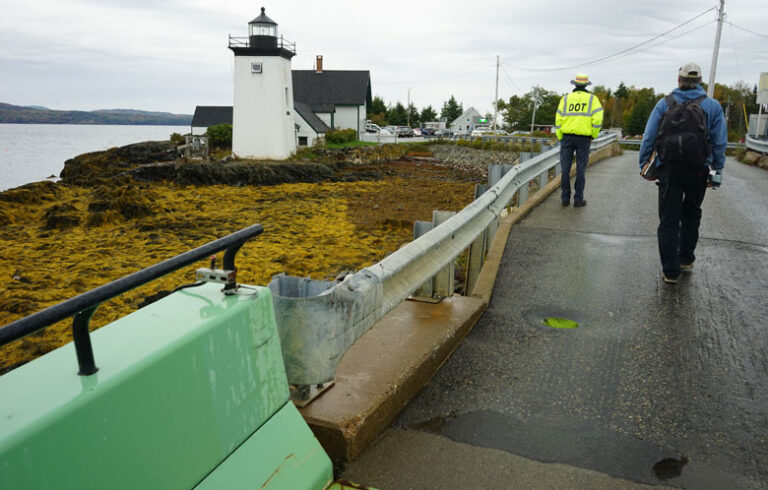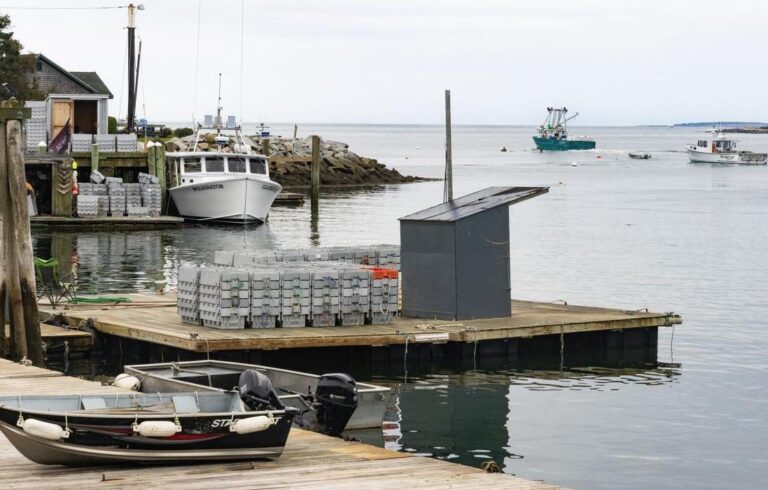Living on one of Maine’s 15 unbridged islands brings challenges which inspired Isle au Haut to create its own try-before-you-buy affordable housing program in the 1990s, and it’s still paying dividends today. Kipp Quinby first came to Isle au Haut as a child through the affordable rental program.
“The Isle au Haut Community Development Corporation (ICDC) started as a solution to the lack of housing,” said Quinby, now the teacher in the island’s one-room school. “A number of us who live here came here through the program or as children with the program. Some of our families no longer live here, but folks come back.”
It works like this—anyone interested in exploring life on Isle au Haut completes an application and when an opening occurs, they could be offered an affordable rental in one of four properties owned by ICDC. They can live there until they find permanent housing on the island or decide it isn’t for them.
“Since we, like most small communities, are constantly worried about population and school enrollment, this is one of the ways we can give folks to come and give it a shot,” said Quinby.
The program predates today’s housing crisis by decades. Today, communities across the state are working on solutions to address a historic housing shortage, accelerated by the COVID-19 pandemic.
Last year, Maine issued 6,183 building permits … roughly half the amount needed to reach statewide housing goals.
In September, the state released its Statewide Regional Housing and Production Goals study, quantifying the crisis. To correct “historic underproduction” Maine needs to build 38,500 homes. To keep up with ongoing needs, Maine will need an additional 37,900 to 45,800 units by 2030, a total of 76,900 to 84,300 homes built over the next six years.
Last year, Maine issued 6,183 building permits according to the U.S. Census Bureau, and is on track to do the same this year. That’s roughly half the amount needed to reach statewide housing goals.
Reaching that target will require all hands on deck and to reach it gracefully, says Nancy Smith, communities should take time to think about development in a strategic way. As CEO of the nonprofit GrowSmart Maine, Smith has been working to help Mainers think about smart growth and land use planning for almost 15 years.
“And what’s happened in Maine with the additional people moving here, and with more people returning here, is that suddenly land use and smart growth are at the center of conversations,” says Smith.
Unlike previous housing crises centered in cities, today many of those conversations are happening in rural towns with limited capacity for planning, and limited housing supplies. Seeing that, last year GrowSmart, together with key partners, kicked off the three-year, three-meeting Building Community Strength training program for ten rural communities. Last month, trainees convened for the second workshop, this time in Machias.
“It’s about building the capacity of the trainees so they can go back and work what they learn into their town’s processes, whether into a comprehensive plan or a special municipal housing strategy,” says Harald Bauer Bredesen, GrowSmart program director.
“But we’re also trying to connect them, to share their experience and perspectives and build long-term relationships,” Bredesen says. “Maybe eventually, they’ll build regional approaches to things together.”
In Machias, Noel Musson shared a successful regional approach to solving one of the state’s most well-known housing issues. The MDI Housing Solutions Initiative, formed by The Musson Group and Island Housing Trust, has drawn together all four towns on Mount Desert Island, including Bar Harbor.
Together, those communities host Acadia National Park’s 3.5 million annual visitors.
“Our company does a lot of work around MDI and in other places in the state of Maine,” said Musson. “We happened to be in a position where we could take a step back and say, ‘Look these towns share a lot of common issues. This isn’t an issue Bar Harbor can solve by itself and it shouldn’t have to.”
Musson laughs as he presents a hand-drawn slide to the trainees in Machias. It may be simple, but it effectively illustrates nine dynamics compounding Maine’s housing shortage: land costs, interest rates, zoning, pandemic supply chain issues, building supply that hasn’t kept up with demand since 2008, building labor issues, fewer builders, second homes, and vacation rentals.
With so much complexity surrounding housing, for any community wishing to address the issue Musson recommends starting close to home. In the MDI Housing Solutions Initiative, Musson began by holding two summits bringing a diverse range of stakeholders together in conversation.
“You have to start to ask yourself the questions, obviously we can’t do this ourselves, who are our partners in this project? Have that first step and have a meeting,” Musson says. “The process is almost as important, if not more important, than the product you’re going to get at the end of the day. Everybody has to feel like we made the right choice.”
Resources like the newly created Maine Office of Community Affairs (MOCA) can help towns plan, says Smith.
“It’s still in formation but it will offer one first stop for communities to go to when they’re looking for resources, whether it’s information, capacity, or funding, and I think that’s going to make a world of difference,” she says.
As communities set out to implement housing solutions, they should also familiarize themselves with LD 2003, says Ben Averill, who helped pen the statewide housing goals study in his role with the Department of Economic and Community Development.
The bill, passed in 2022, includes a provision on accessory dwelling units—secondary residences on a single-family property—that could help towns, says Averill. It sets a minimum size requirement—190 square feet—but sets no maximum, though the municipality may set one.
“That has the most ability to be the low-hanging fruit, the easiest way to help communities move forward with their housing challenges,” says Averill. “I think there’s a high potential. It’s an easy way to work towards edging out the housing crisis that we’re having across the state.”
Most Maine communities were asked to include LD 2003’s provisions in local ordinances.
Smith urges towns to incorporate smart-growth principles such as directing development toward existing communities, preserving open space and farmland, and encouraging community collaboration in development decisions.
“It’s such an exciting time because the state and federal government are recognizing the value of integrating plans for housing, transportation, and climate resilience, and there are resources for that,” says Smith. “I know small towns are feeling that sense of panic and being overwhelmed. But I want to stress that we should just take a deep breath. There are resources.”





